+++ On the occasion of his 95th birthday: the impressive rediscovery of the visionary of the metaverse and the new crypto art.
+++ On the occasion of the NFT’s birthday, Herbert W. Franke, a pioneer of digital art, will auction 100 works as crypto-art for the first time on June 1.
+++ About fundraising: The proceeds of the big NFT sale will be used to establish the “art meets science – Foundation Herbert W. Franke”.
The Francisco Carolinum in Linz, Upper Austria, the world’s leading art museum of current trends in digital art, is presenting the life’s work of the scientist, artist and philosopher in a major exhibition to mark the 95th birthday of Herbert W. Franke on May 14 and until June 12. It bears the simple but catchy title VISIONARY. For the first time in a traditional art museum, exemplary works from seven decades of creative work will be shown in a large solo exhibition. It goes back to the 1950s, when Franke, as a doctor of physics, began to bring science and art together with his analytical experiments. They were always based on mathematical methods and the use of various apparatuses and machines. In this way, the Austrian explored new territory throughout his life and consistently looked into the future of digital art for over 70 years like hardly anyone else. Today, he is also considered a mastermind of the metaverse.
On the occasion of the ceremonial opening of the exhibition at the Francisco Carolinum, the province of Upper Austria honored the jubilarian, who in 1979 was also a co-founder of Ars Electronica, the world’s largest media festival based in Linz, with the province’s highest cultural award, the Gold Medal of Culture. Prof. Dr. Alfred Weidinger, Managing Director of Upper Austrian Provincial Culture, emphasizes: “Herbert W. Franke is a visionary. As early as the 1950s, he saw the artist in the role of the constructor, making use of oscillographs, microscopes, X-ray apparatuses and even computers in order to venture into new artistic territory. As a successful science fiction writer, he was already concerned in the 1960s with information technology in the context of the perfected surveillance state, as well as with artificial intelligences and the subject of virtual worlds, thus laying the theoretical foundations for the metaverse, which he used a few decades later both as an exhibition space for his digital art and as a laboratory. We are delighted to be able to present this important work in the interplay of science and art on the occasion of his 95th birthday at the Francisco Carolinum.”
Numerous exhibits in the impressive show of works were taken from the artist’s archive for the VISIONARY exhibition and some of them were elaborately prepared for the presentation by the Francisco Carolinum. It shows the complexity of his earliest research and artistic works, in a time when the digital computer did not yet exist.
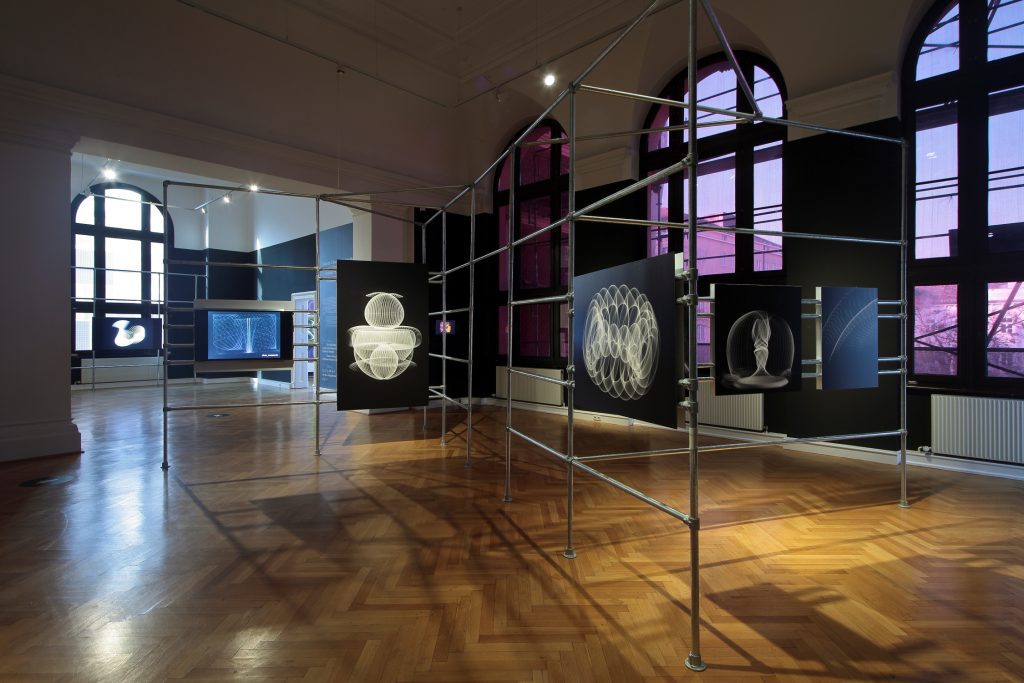





The Laying of the Foundation Stone of Crypto Art in the Fifties
A computer artist from the early days, Franke experimented with generative photography in 1953, used an analog computer from 1954 and the first mainframe computers for his abstract algorithmic art from the 1960s. In 1970 he was represented at the Venice Biennale with the silkscreen from his series Squares. It is his first work created with a digital computer, in which he already let chance work together with an algorithm. In 1980 Franke acquired one of the first apple II home computers available on the market. Since then, the artist has programmed his own codes and experimented with the interplay of codes and random processes. He was particularly fascinated by dynamic sequences, the reciprocal control of moving images and music, and interactive programs.
As early as 1957, under the title Art and Construction – Physics and Mathematics as a Photographic Experiment (Verlag F. Bruckmann), Franke provided proof that technology “opens up undreamed-of new artistic territory. In it he published groundbreaking and for modern NFT and net art fundamental ideas and conceptions about the future cooperation of man and machine in the production of art. On the occasion of the VISIONÄR exhibition, the Francisco Carolinum will also make this publication available worldwide for the first time in an English translation before the end of 2022 – together with a work overview of Franke’s earliest experimental photo art from the 1950s.
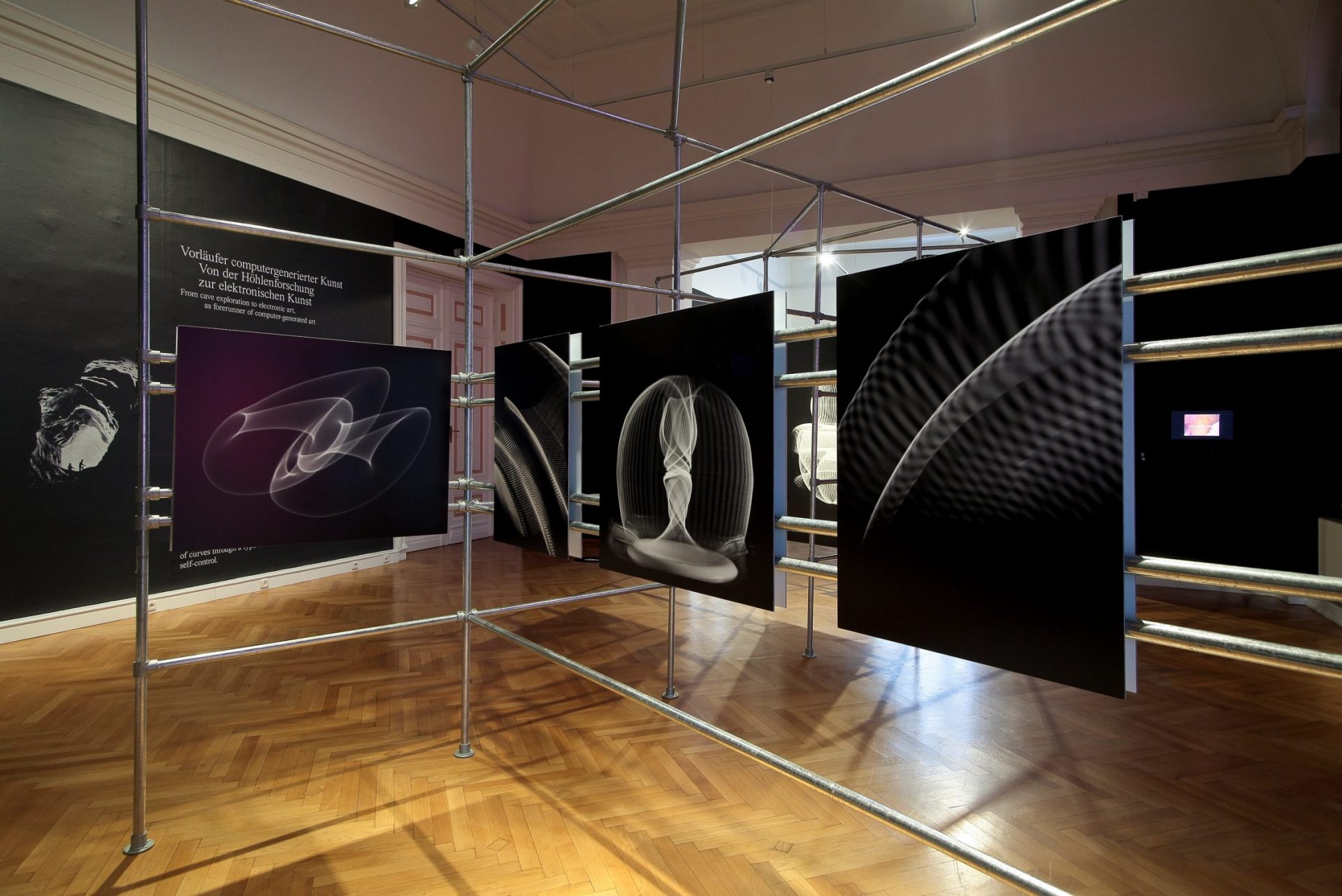

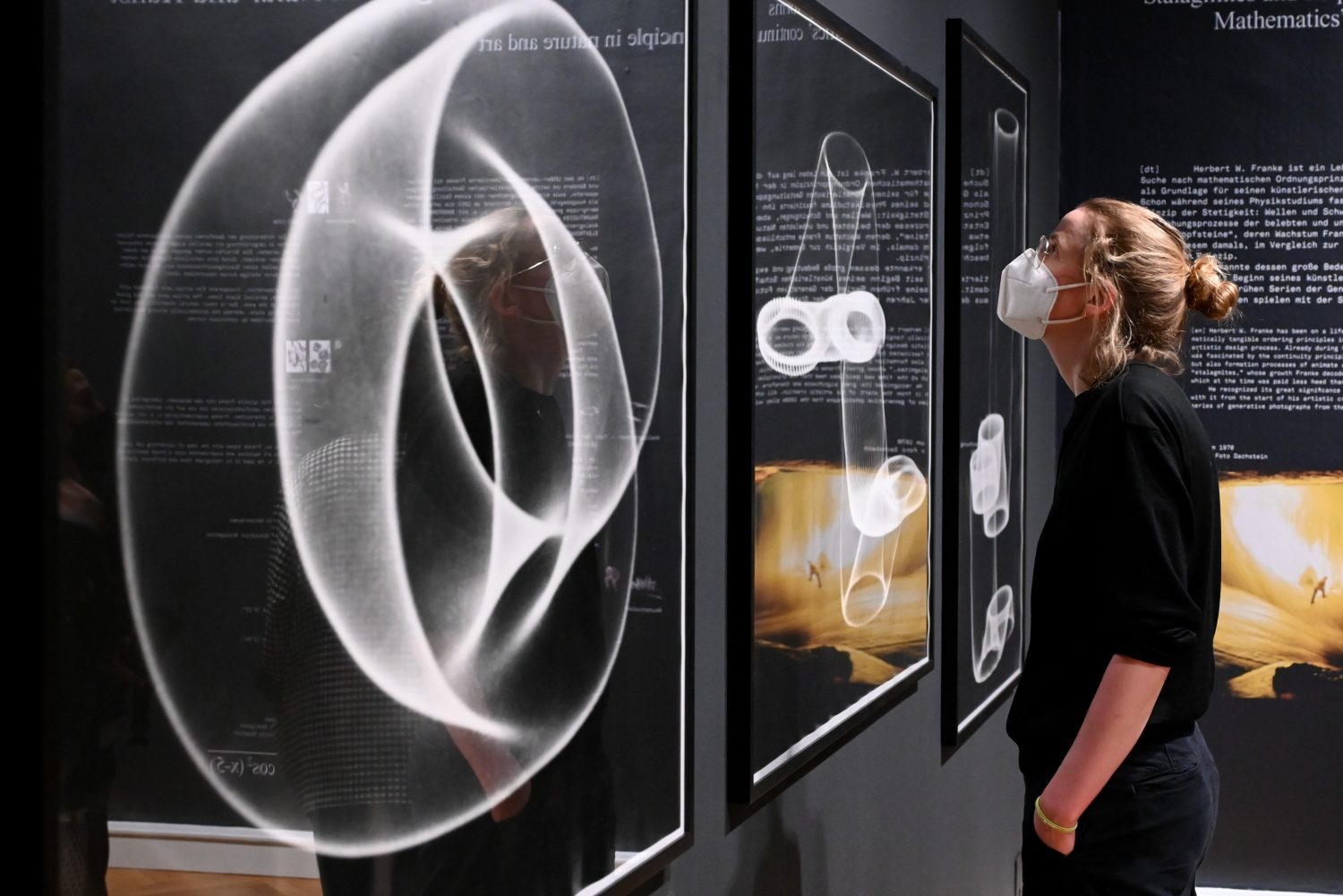

The reactions when he became active on Twitter on March 8, 2022, showed how current and formative Franke’s work and his writings, his visions and thoughts are, especially today, when digital art now stands alongside the classic media of painting and sculpture due to the high level of interest in NFTs. Within 24 hours, @HerbertWFranke’s account was already followed by 10,000 people, and his first tweet received over 15,000 likes and over 2,000 retweets. Meanwhile, the worldwide Twitter community of net and digital art celebrates him as “their” pioneer. Many well-known contemporary artists revealed in their welcome tweets how much their own work has been influenced by Franke’s published works. Others, previously unfamiliar with Franke, expressed surprise in many cases at how current artistic trends are already visible in Franke’s earliest works. Kevin Abosh, one of the world’s best-known crypto artists, put it this way during the panel discussion at the exhibition opening, “Whether we like it or not, his work is in our DNA. Our cultural landscape today shows the fruits of his labor.”
Exhibition at the Francisco Carolinum: The Early Work of “Generative Photography
Exhibition at the Francisco Carolinum: The Early Work of „Generative Photography“
In the VISIONARY exhibition, Franke’s work is presented in exemplary fashion in three major thematic areas. The rediscovery of this extensive oeuvre, a bridging of science and art supported by analysis and rationality, ranges from cave research to mathematical as well as aesthetic structural investigations to media art. A large room deals with the mathematical principle of continuity, which Franke recognized early on as an important ordering principle, as in the series Bandfgormenzip in nature, and which he also placed at the center of his artistic works of the first work phase. It extends to the early 1960s and shows Franke still as a representative of generative photography, who created worlds of light not only in the photo studio, but also with the help of X-ray apparatus, microscopes, and an analog computer.
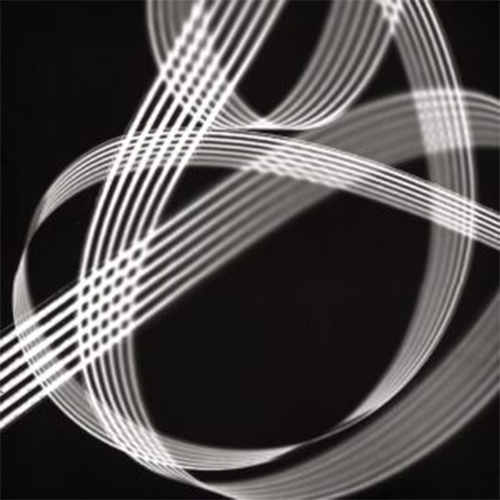

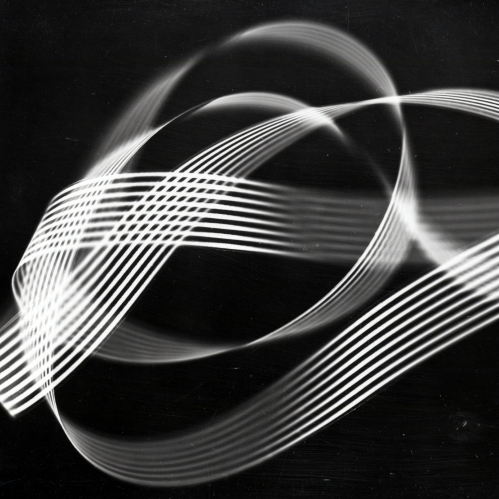

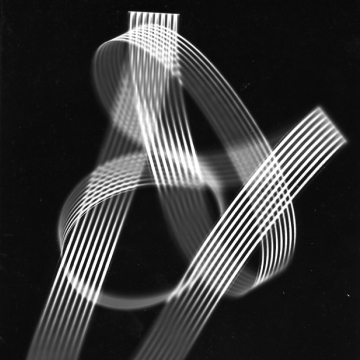

Exhibition at the Francisco Carolinum: Using computer art to achieve rational aesthetics
With the extensive series Math Art, to which a separate room in the exhibition is dedicated, Franke transformed the mathematical formula language into colorful art worlds from 1980 onwards – also with the help of special color compositions. In a fifteen-year collaboration with Horst Helbig, programmer at an institute at the German Aerospace Center (DLR), he examined numerous mathematical disciplines with regard to their aesthetic dimension. The color served to encode certain structural elements and was of fundamental importance. Starting with algebraic landscapes, the two worked through wave functions, Fourier transformations, fractional dimensions and logical connections through very different disciplines until they finally visualized irrational numbers as well as random processes and logical connections with their method.
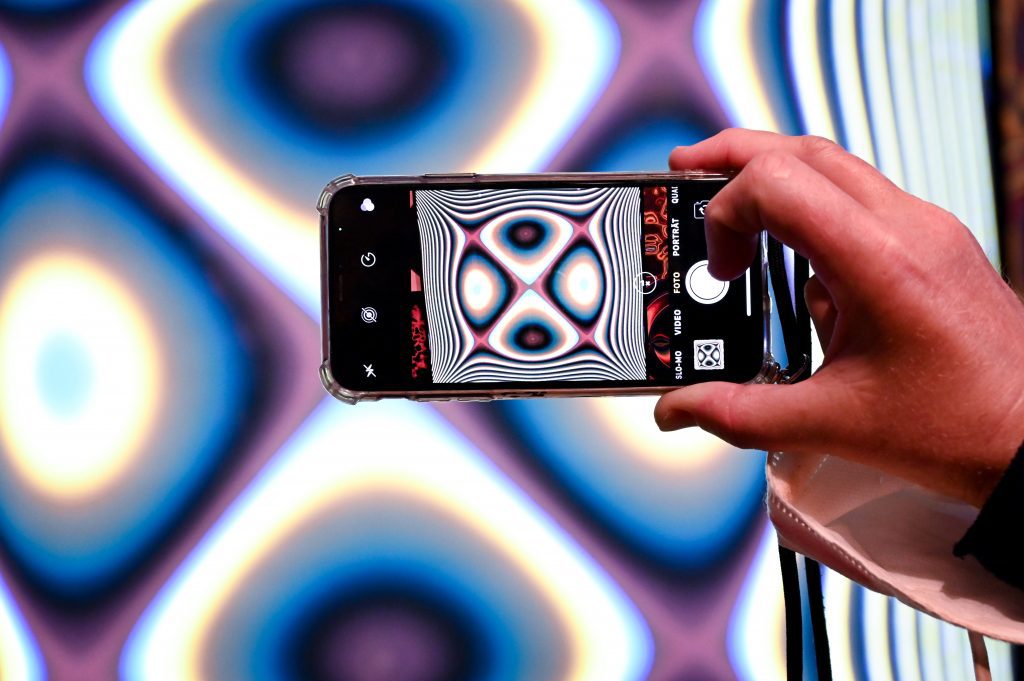

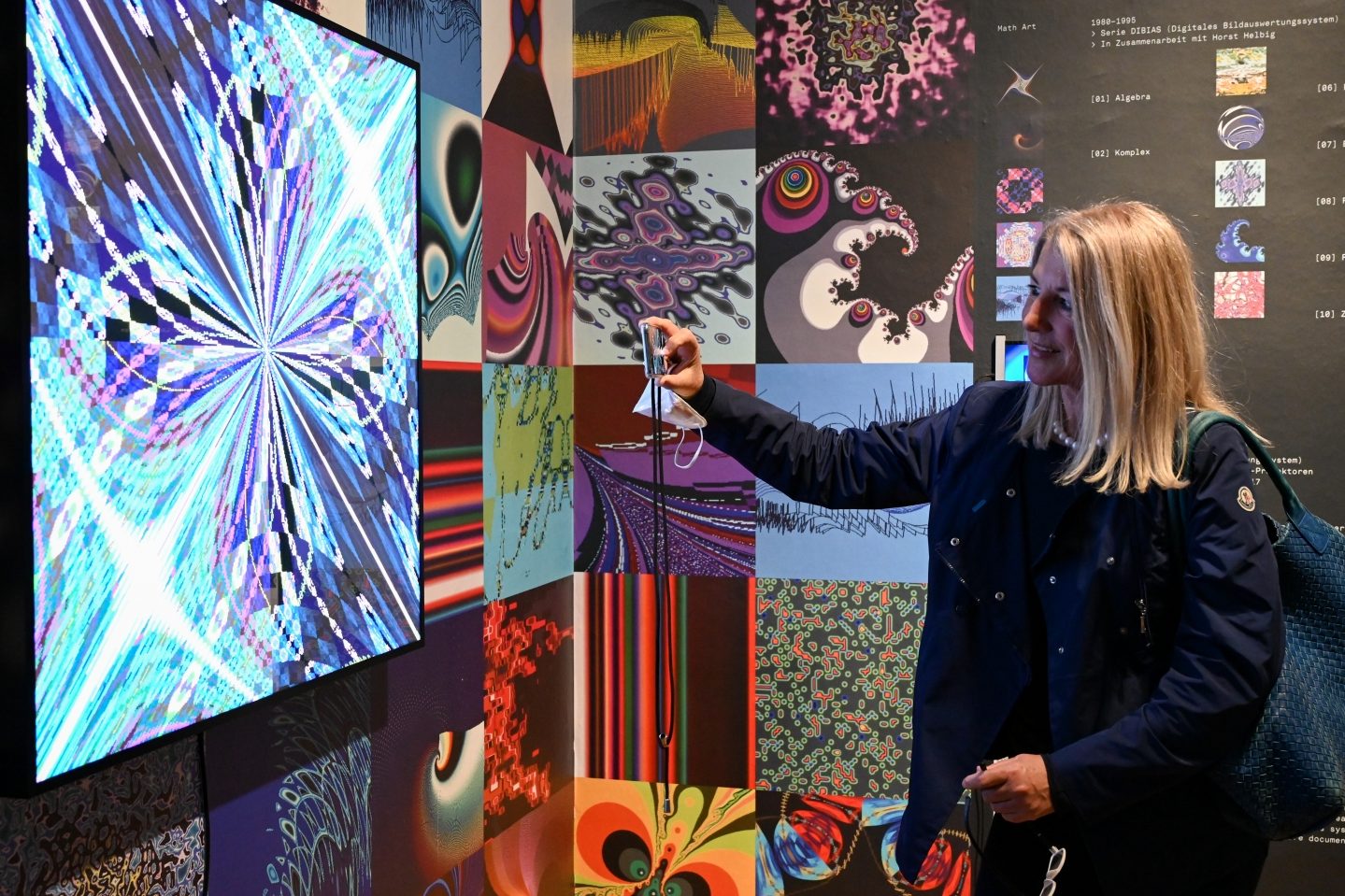

Exhibition at the Francisco Carolinum: The aesthetics of the world of mathematical formulas
Last, but not least, the VISIONÄR exhibition is also dedicated to Franke’s third field of activity, which makes him a visionary of the Metaverse. Franke is the first and most important German-speaking post-war author of utopian literature, whose works received numerous prizes. In 2017, the European Science Fiction Association honored Franke as the first German-speaking author with the title “Grand Master” for his life’s work. In his literary works, Franke relies on the description of different models of possible futures in which, among other things, the opportunities and dangers of information technologies, but also of cyberspace and virtual worlds, can be experienced. These utopian works, such as his virtual exhibition world Z-Galaxy on the 3D platform Active Worlds, which Franke built in the mid-2000s, also make him a pioneer of today’s Metaverse.
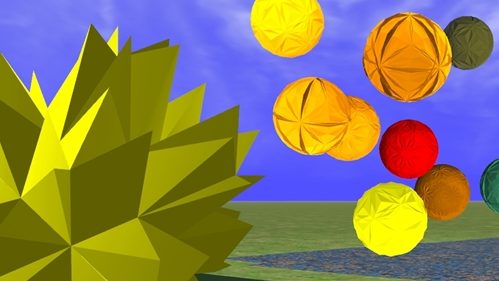



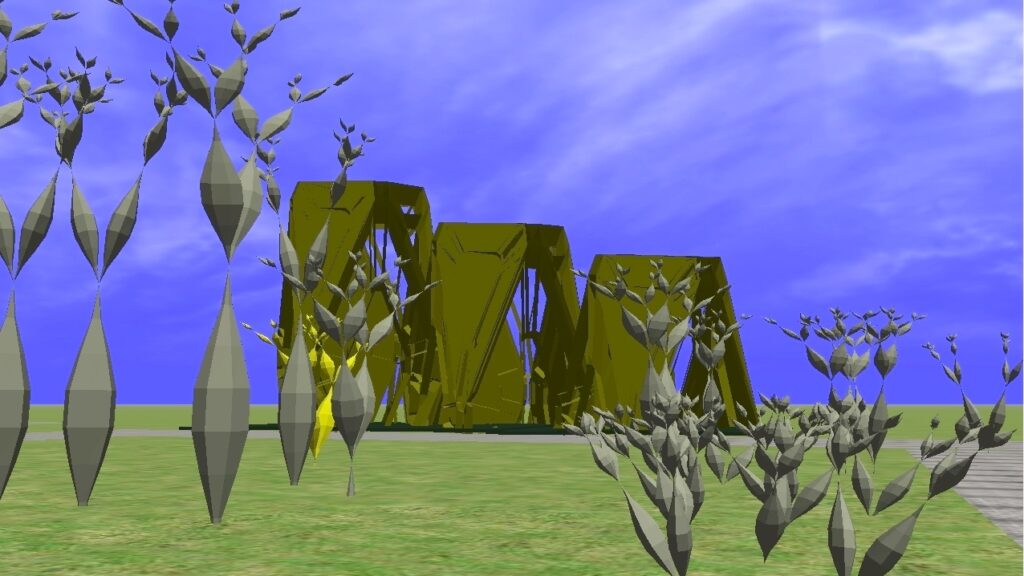

NFT drop for foundation creation
2022 will also be the year in which Franke will sell 100 “Best of Selection” works from the large Math Art work group with a big birthday drop on Quantum, one of the world’s leading blockchain platforms. The proceeds will be used to found the “art meets science – Herbert W. Franke Foundation”, which in the future will be dedicated, among other things, to the cataloging of Herbert W. Franke’s extensive work, but will also be dedicated to exhibitions, art projects and research work on relevant foundation topics will honor Herbert W. Franke’s life’s work, the visionary between science and art. Rodolphe Ködderitzsch, Head of Digital Art and Crypto Art at Quantum says: “It is a great honor to bring Herbert Franke’s visionary work to the blockchain for the first time in history. With the great attention that generative art is receiving today through NFTs, Herbert Franke’s work is more relevant than ever. It’s inspiring to see how influential he is in the new art scene and that he’s finally getting the recognition he deserves. We at Quantum are very proud to be able to play a part in celebrating the pioneers and trailblazers who have paved the way for digital art and crypto art.”
No matter whether Herbert W. Franke researched geochronology in the Dachstein caves, whether he traveled into virtual worlds with fantastic stories or he searched for new territory in the visual arts with machines and computer codes – his researcher’s spirit always wanted to be used for the venture into territories unknown to humans.
Copyright of the photos on this page: Francisco Carolinum and art meets science
Herbert W. Franke VISIONARY
Exhibition at the Francisco Carolinum
Linz | Austria
March 30 – June 12, 2022

